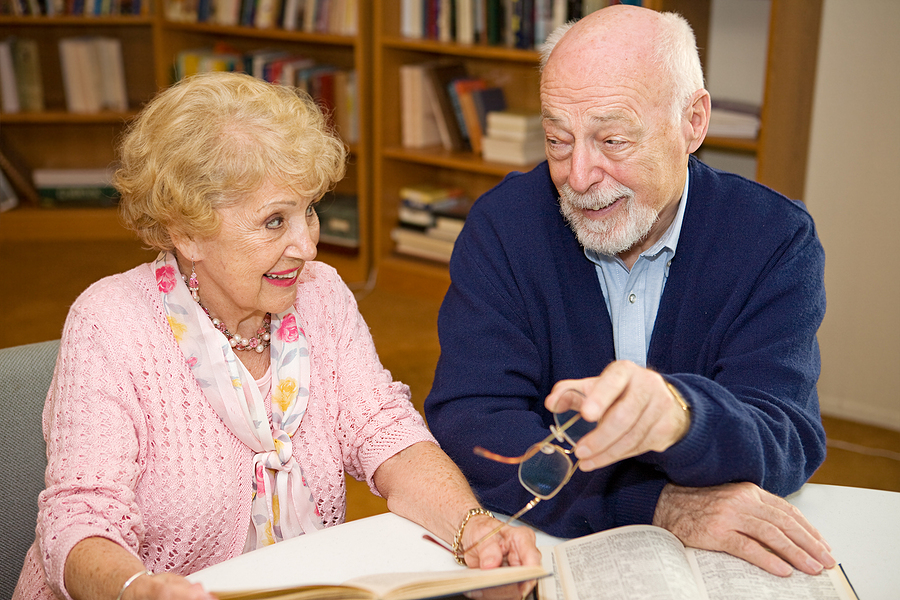Decluttering is more than just tidying up your home. By clearing up some space you can focus on what really matters and gain time, energy, and resources back into your life. Unless you’ve got a super tight timeline, decluttering can be done over weeks or even months to eliminate getting overwhelmed. Join us as we discuss essential decluttering tips for seniors to help you get started in this process.
10 Decluttering Tips for Seniors
Decluttering is simple in principle: You go through all of your stuff and decide what to keep, what to donate, and what to throw away. But while it may be simple, it certainly isn’t easy, especially if you’ve been living in one place for an ample length of time. Here are 10 tips to get you started:
- 1. Get rid of damaged or hazardous items first. This includes broken furniture or appliances, anything that’s expired, outdated electronics and cables, and ripped or stained clothing. Don’t make the mistake of thinking you can find someone to fix an old toaster or broken video camera. This step should be easy, giving you the momentum to tackle more challenging tasks.
- 2. Know where to donate. Before you get into your decluttering, you will want to know where things are going. An easy option is to search for any Goodwill or Salvation Army stores in your area and note their donation hours. If you’ve got enough stuff, Goodwill will even park a mobile donation center at your home for up to a week for you to fill. In most parts of the country, you can schedule a home pick-up from Vietnam Veterans of America.
- 3. Give away duplicates. Many people who grew up during the Great Depression never quite shook the fear of not having enough. But unless you’re pushing 100, that’s not you. Be honest with yourself about how many towels, sets of sheets, or coffee mugs you actually need. As for handbags and shoes … we won’t judge (but do take a look at tip No. 8.)
- 4. Consider giving away some family heirlooms. Many of us keep objects with sentimental value to pass on to loved ones after we’re gone. However, it can be more meaningful to personally share these gifts with the people you care about. This allows you to explain the history of the item, why it has meaning, and why you want them to have it. These unexpected gifts are an excellent opportunity for connection.
- 5. Break the job down. If you’re feeling overwhelmed, choose one of the following strategies:
-
- Commit to decluttering for a designated amount of time each day, even if it’s only 10 or 20 minutes.
- Tackle one room at a time. In the kitchen, you could break the task down to one or two cabinets a day.
- Fill one bag to donate or throw away each day.
- Adopt the 12-12-12 rule of decluttering. Each day, find 12 items to donate, 12 items to throw away, and 12 items to put away properly and keep.
- 6. Don’t fall into the “basket trap.” It’s fun to shop for pretty baskets and bins and imagine that they will solve your clutter problem. But decluttering expert Marie Kondo (famous for her book, “The Life-Changing Magic of Tidying Up”), advises decluttering first and then seeing what additional storage solutions you might need.
- 7. Give it 90 days. If you’re on the fence about whether to keep something, put it into a “90-day pile.” If you didn’t need it during that time, let it go. Obviously, seasonal items like holiday decorations and winter boots are exempt from this strategy. If you have the time, tackle your closet by turning all of your hangers backward. Once you’ve worn an item, hang it back up facing the right way. At the end of the year, part ways with anything still facing the wrong way.
- 8. Ask yourself, “Does it spark joy?” This is, perhaps, the most famous tip offered by Kondo, who advises picking up each item one at a time, quietly asking yourself if it sparks joy, and seeing how your body responds. Think about, for example, your handbag collection. It’s tempting to keep something just because you spent a lot of money on it, but does it light you up inside? If not, let it go. (ThredUp.com is a great place for selling gently used handbags and clothing.)
- 9. Consolidate meaningful items. Maybe you have bins full of drawings your children made you or an entire china cabinet full of your mother’s figurines. Pick the top one, two, or three pieces from each collection to hold on to and let the rest go. If you’re consolidating drawings, photos, artwork, or letters, consider scanning them and organizing them digitally.
- 10. Find designated spaces for daily items. The items people lose the most are often the ones they use every day. As part of your decluttering effort, consider designating specific spaces for the things you use frequently. At the end of the day, you can check to see that everything is in its place, eliminating the frustrating searches for reading glasses, phone chargers, and car keys.
Simplify Life at The Moorings at Lewes
Decluttering is a crucial step in transitioning to an independent living community. By streamlining belongings, individuals can create a more organized and manageable living space, which reduces stress and enhances safety. Embracing a more minimalist approach and decluttering can lead to greater independence and a sense of freedom when transitioning into an independent living community.Independence comes in many forms, and The Moorings at Lewes honors them all. Located on the Delaware coast, our Life Plan Community offers 35 acres of opportunities, including walking paths, community ponds, a butterfly garden, a dog park, and many pleasant places to enjoy a sunny day. Indoors, you’ll find a heated pool, a fully equipped fitness center, a woodworking shop, a library, an art center, and more. Discover how vibrant and active retirement life can be by scheduling a visit to our campus in Lewes, Delaware.



